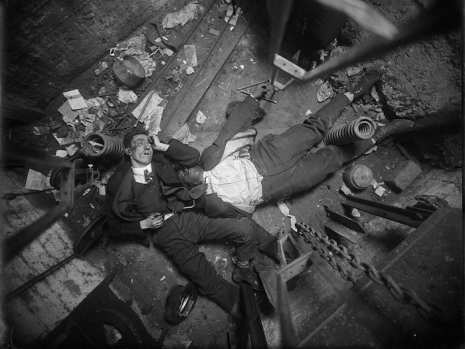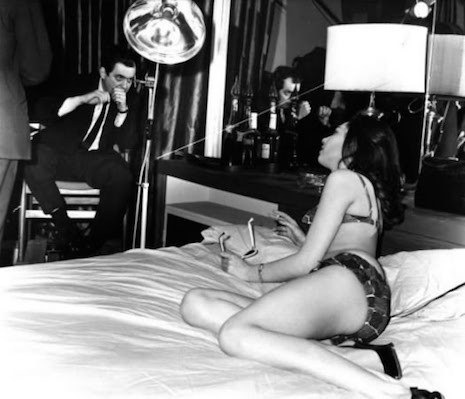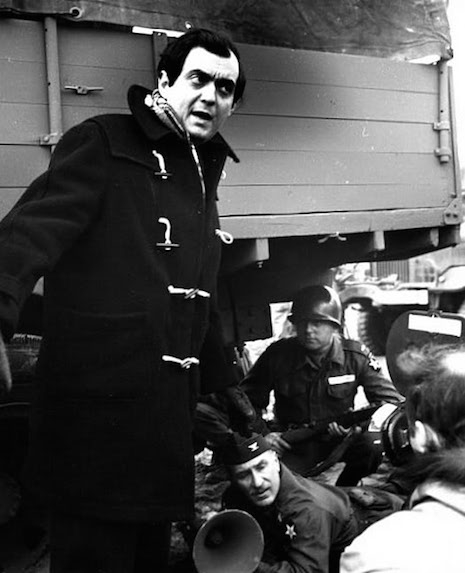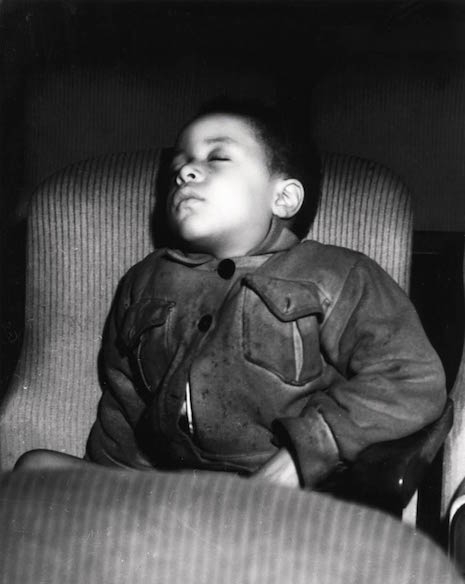
Murder was easy. The stiff would lie on the sidewalk for an hour or two until the wagon took his body downtown to the morgue. The stiff was slumped in the doorway of an Italian cafe, head to the door, feet on the sidewalk. Weegee sized up the scene. Every other photographer was taking the close-up. Bloodied face. Bloodied hands. Legs at strange angles. Weegee clocked the people hanging out of their tenement windows looking down on the scene below. Moms, Dads, kids reading the funnies. This was the drama. One stiff was the same as another. Weegee wanted his pictures to show some humanity. He walked back about a hundred feet. Set up his camera. Used flash powder and Kazam! There was the whole scene. The corpse. The blood. The cops. The balcony seat of people looking out to see what had just happened. Drama. Humanity. Crime.
Weegee came out of Złoczów now part of the Ukraine. He was born Arthur Fellig in June 1899. He emigrated with his family. They landed New York 1909. Lived in the Lower East Side. His father was a hatmaker and part-time rabbi. Weegee took whatever work came. He became a janitor. Got the nickname “Squeegee Boy.” He hung around with the bums on the Bowery. Started taking photographs. First passport pictures, then commercial work. At the age of thirty-five, he upped his game, quit commercial work, became a freelance news photographer.
He went out nights, hung around the police station waiting for the stories to come in over the teletype. Off he went taking pictures of murders, fires, fender benders, wacko kids on their way to juvie hall. He spent two years with no accreditation following the police all around town. In 1938, the cops gave him his own police radio. Weegee could tune in and pick up on what was happening. Most times he got to the crime scene before the cops. The cops thought he must be psychic. This gave rise to the apocryphal story his nickname was the phonetic spelling of “Ouija.” Weegee added a darkroom to the trunk of his car. He took his picture, developed it at the scene, put his print on the back, and sold it to the papers. During his ten years at police headquarters, Weegee said he must have photographed 5,000 murders—“at least one murder every night.”
Weegee wanted to capture the perfect picture. He always claimed he photographed things just as he found them but this wasn’t always so. The famous pic of rich tiaraed dames in white furs off to the opera with a dirty-faced down-and-out lady beside them was staged. The bum was a drunk from a bar in the Bowery. She was paid a few drinks to stand next to the patrons going to the Met. Even so, it’s a damn fine photograph.
Taking people’s pictures wasn’t easy. At first, Weegee felt nervous, scared, but he knew he had to show confidence. He had to be in control. When he was, he found out people liked getting their pictures taken. One day his editor asked him why was it that when cops arrested perps and threw them in the back of the wagon, the criminals always covered their faces? Weegee came up with a solution for that. One night, Weegee asked a moll if she wanted the picture the papers used just to be her mugshot? Cause that’s certainly what they’re gonna use. Wouldn’t it be better if he took a good picture the way she wanted to be seen, well-lit like a Rembrandt, looking her best rather than some guilty lowlife? After that, most perps wanted Weegee to capture their best side.
Weegee photographed a world of crime and violence, murder and death. He changed the way we look at the world. He made an art form of the crime scene, which appealed to both the sensation-hungry readers of the tabloid press and the leafy, middlebrow, intellectuals. Weegee’s photographs created a style that is often copied but never bettered. This is film noir. This is every classic gangster movie you’ve seen. This is life as it happened.


More of Weegee’s shots of death & disaster, after the jump…












